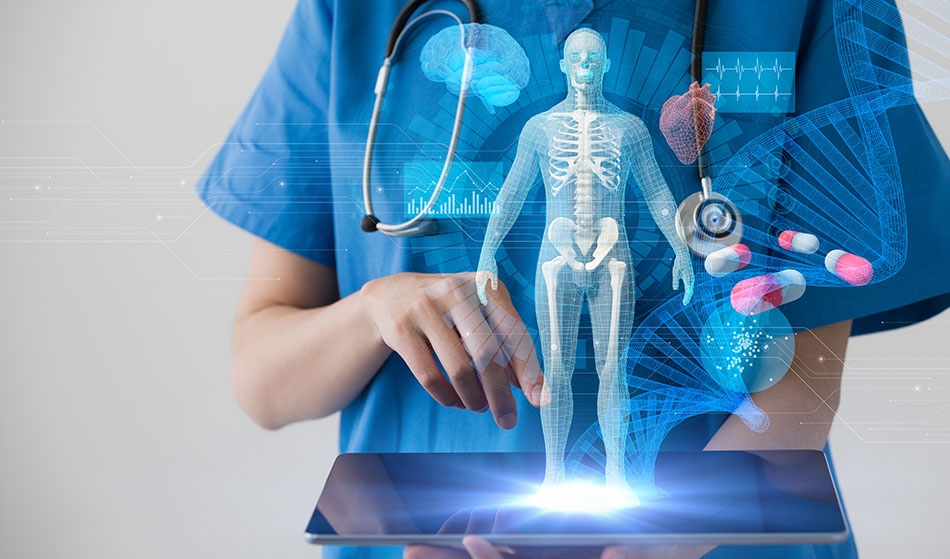When we talk about healthcare technology, some of the things that come to mind include software like the In Office Dispensing system and other tools like the laboratory billing solution. Well, there is more to that. We will look at nanotechnologies in the field of medicine and healthcare.
Since the 90s, nanotechnologies have become research, a concrete fact, leaving the territory of the genius of visionary scientists. And today, over thirty years later, we can manipulate all kinds of materials on a dimensional scale of less than a micrometer, modifying their composition and their atomic or molecular arrangement, with the possibility of developing nanotech products and devices in the most diverse fields, from electronics to construction, from medicine to pharmaceuticals, up to energy-saving and consumer goods. You can go through Medical Reviews for Taopatch, one of the best wearable nanotechnologies.
What Are Nanotechnologies?
Nanotechnology refers to that set of methods and techniques for the manipulation of matter at the lower dimensional scale to a micrometer, including value between 1 and 100 nanometers, where a nanometer is equal to one-millionth of a millimeter and one billionth of a meter.
The goal is to create radically new products and devices, thanks to the contribution of different disciplines, including molecular biology, chemistry, materials science, physics, up to mechanical and electronic engineering.
Nanotechnologies in Medicine and Pharmaceuticals
The value of nanotechnologies in medicine lies in their ability to act on a scale – the “nano” one, in fact – from 100 to 10,000 times smaller than that of the human cell, allowing nanoparticles to move at the same dimensional level as biological processes, opening the way to precision medicine. A particularly relevant application is in the oncology field, where contrast media consisting of nanoparticles have been developed. Thanks to their properties and particular technologies, it identifies the tumor with very high precision.
In the pharmaceutical field, however, work is being done on the development of nanoparticles for the transport of drugs within the body: the idea is to structure the material so that, on the one hand, it hooks the drug molecule, and on the other hand, after being injected, it moves around the body and, arriving at the exact point, opens, uncouples from the drug and only release it where it is needed.
What Is Nanomedicine?
With the application of nanotechnologies in the medical and pharmacological fields, we enter the territory of “nanomedicine, “in which knowledge and technologies are used in the order of magnitude of nanometers.
They are two of the macro-trends (interrelated) that, from the outset, have marked their field of study of nanomedicine:
- In the first (diagnostics), nanotechnologies focus on the analysis of the human body at the molecular level, to reach a deeper understanding of the state of health and the state of disease, and to use biomarkers (molecules that identify the presence of a given tissue) as a tool to identify single defective cells or predictive signals of the onset of the disease
- the second trend (therapy) sees nanotechnologies operating towards the progressive miniaturization of devices. The declination of this trend is nano-encapsulation for the release of targeted drugs (drug delivery ) and nanoparticles for less invasive therapies (for example, in oncology) or as drugs with particular properties.
TaoPatch is one of the most popular nanotechnology wearable devices, which combines acupuncture with light therapy. You can look at these Taopatch Reviews to see what different people have to stay about the product.
Nanotechnology and Diagnostics
In the context of disease diagnosis, in particular, two types of nanotechnologies are distinguished:
- the first uses biosensors or devices in which the biological recognition element (for example, an enzyme, an antibody) is placed in direct contact with a transducer (a common example of a biosensor is the one used to measure blood sugar). Using biosensors, the molecules (biomarkers) associated with a specific pathology are identified.
- the second type measures biomarkers using molecular imaging techniques or nanosensors introduced into the patient’s body
Finally, the development of nano-scale sensors – mechanical, electrical, or optical – and their integration into micro-scale devices offer significant potential for developing portable healthcare devices that can be used outside the laboratory, hospital, by medical staff, or directly by patients, in the field of telemedicine.

